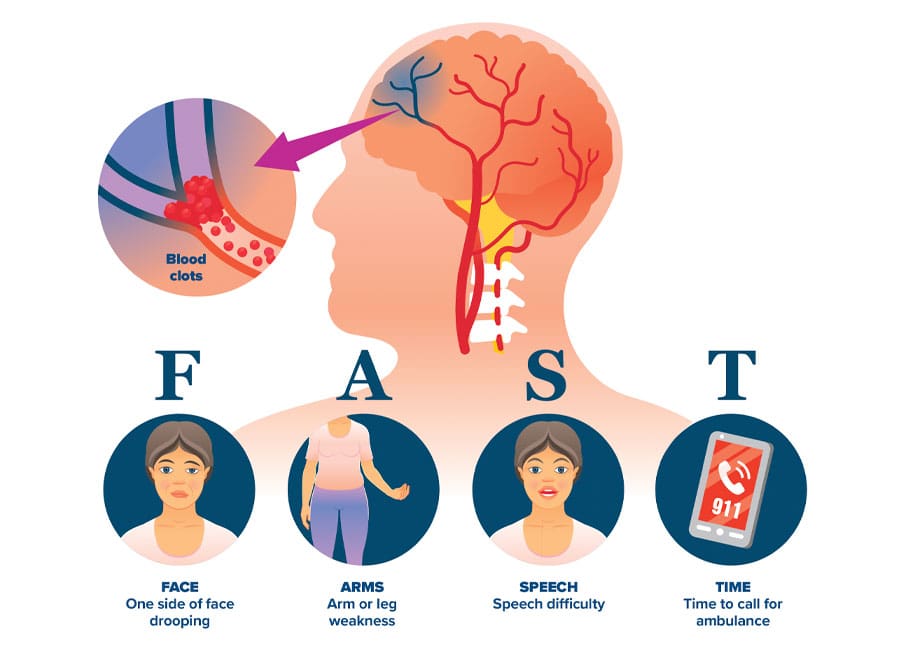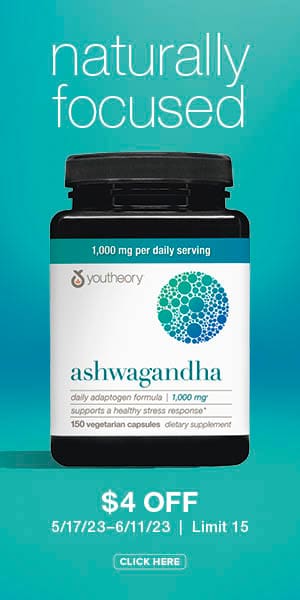For Your Health

© VectorMine / STOCK.ADOBE.COM
When strokes strike
Be aware of the varying risks, types, causes and symptoms of stroke
by JANE DOUCET
May is Stroke Awareness Month in the United States, which helps bring attention to this serious medical condition. Every year, more than 795,000 Americans have a stroke, and about 610,000 of these are first strokes. In 2020, one in six deaths from cardiovascular disease was due to stroke.
“The older you get, the more at risk you are,” says Patrice Lindsay, the director of health systems change at the Heart and Stroke Foundation of Canada. “But because progress is being made in new treatments and research, having a stroke doesn’t mean you can’t have a meaningful life.”
The facts are frightening, but nothing raises awareness about a health condition like a celebrity who publicly shares a personal experience. Juno Award–winning Canadian musician Alan Frew, who fronts the rock band Glass Tiger, did exactly that after experiencing a stroke.
In August 2015, Frew, then 58, had a stroke while asleep in Toronto. Paralyzed on his right side, he began the long road to rehabilitation and recovery. Two years earlier, he had been diagnosed with high blood pressure and high cholesterol, but he had been feeling so well that he stopped taking his prescription medications. In hindsight, he believes he wouldn’t have had the stroke if he’d stayed on his medications.
What is a stroke?
A stroke is a sudden loss of brain function caused by a brain blood vessel blockage (ischemic stroke) or rupture (hemorrhagic stroke). Symptoms can include weakness or loss of sensation, often on one side of the body; confusion or difficulty speaking; vision difficulties; headache; or loss of coordination and balance.
Stroke can happen to anyone, at any age, from infancy to adulthood, although most occur in those older than 60. Yet stroke disproportionally affects women—more die of stroke or have worse outcomes afterward, and more are living with the effects of stroke and facing more challenges as they recover. “We don’t have a great understanding about trends in treatment for women, so it’s a big area of research,” says Lindsay.
The onset of symptoms is typically sudden. The acronym FAST is used to teach people how to detect symptoms:
- Facial drooping on one side
- Arm or leg weakness
- Speech difficulties
- Time (if you experience the first three, it’s time to call 911)
“The quicker you act by calling 911, the better your outcome will likely be,” says Lindsay. “Don’t drive yourself to the hospital. Have someone drive you. A 911 call triggers actions at the hospital, where they’ll be preparing to do the appropriate tests when you arrive.”
Treatment
Treatment may include the removal of a blood clot or clots, then procedures such as angioplasty or stents, or medication such as blood thinners, to prevent further clots from forming. It may take weeks or months of physical and speech therapy to strengthen the affected areas.
Now 66, Frew is able to reflect on his experience—and offer advice. “There was massive depression at first,” he says. “Stroke is such an insult to the human condition. You have to allow yourself to be broken and mourn what you have lost, then accept that this is it.”
Although people tell Frew they can’t tell he had a stroke, he says his right hand and arm will never be the same. He’s now vigilant about taking his medication, swims daily, is mindful of what he eats and has cut his sodium intake. “If I can help one person feel less stigmatized, I have done my job,” he says.
Decrease the risks
Certain risk factors for stroke, such as age, sex and family history, can’t be changed. Elderly women are especially vulnerable.
Hypertension (high blood pressure) is the most important modifiable risk factor, so keep it in check.
Other important prevention factors include maintaining a healthy weight, eating properly, exercising regularly, not smoking, not drinking excessively and controlling cholesterol.—JD
Young people and strokes
Over the past 15 years, more Americans in their late 20s, 30s and 40s have suffered strokes. Why? Because more are living with high blood pressure, Type 2 diabetes and obesity, and when risk factors for stroke show up early, so do the diseases they lead to, say the experts. “These conditions are often not well addressed, and they’re risk factors for stroke,” says Dr. Mitchell Elkind. Studies show that many young people are finding work environments stressful, leaving them with less time to exercise and eat well.
If there’s a family history of strokes, the risk is higher. And if a young woman smokes cigarettes, has classic migraines with aura and is taking oral contraceptives, her risk is much higher.—JD
Jane Doucet is a Halifax, Nova Scotia–based journalist and author.
Costco Connection: Prescription medications are available in Costco Pharmacies. Exercise equipment, healthful foods, smoking cessation items and more are available in Costco warehouses and at Costco.com.



